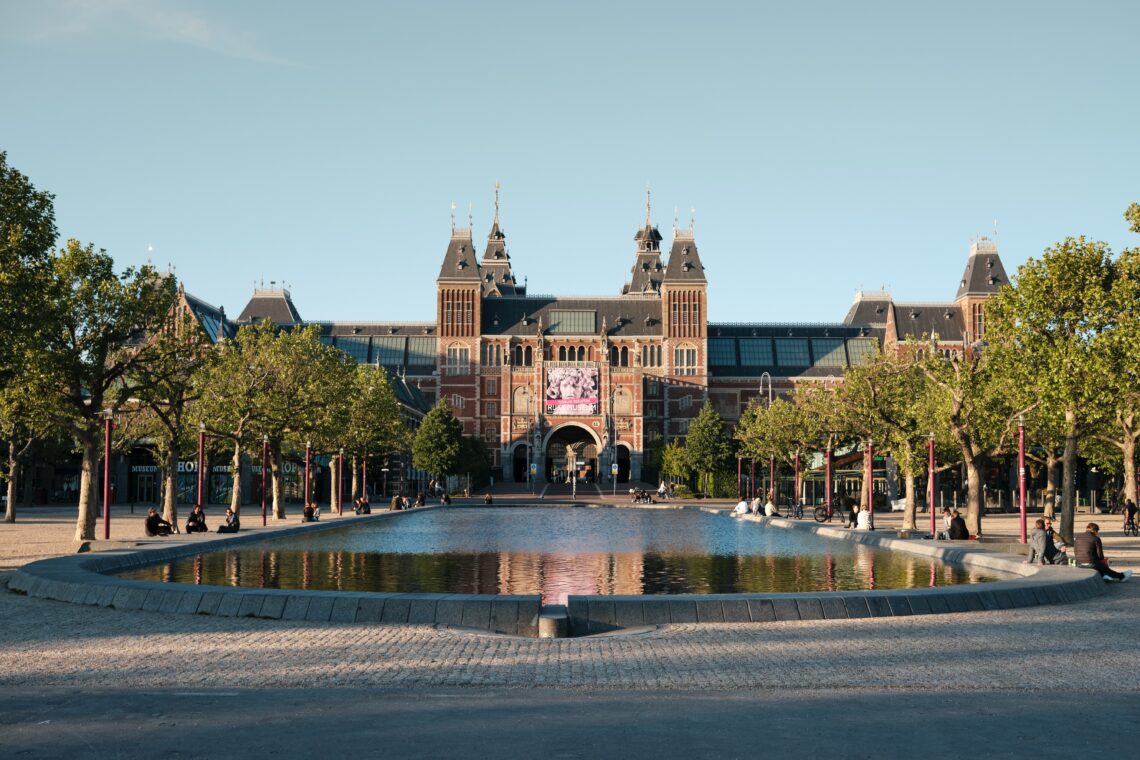
Case: New city, new culture, new language (Amsterdam, the Netherlands)
Getting to know a new country, city and language can be difficult. How do you make a new country feel like home? How do you get acquainted with a new culture? Part of this process can be facilitated through (mandatory) integration courses. The municipality of Amsterdam decided in 2006 to add something extra to the existing integration course for new residents of the city.
With the project Stad en Taal (City and Language) the municipality of Amsterdam hopes that newcomers do not only learn the new languages but also get acquainted with the art and culture of the city and make it their new home.
Background
The project started at the Amsterdams Historisch Museum (now the Amsterdam Museum), the Stedelijk Museum and The Resistance Museum. Both developed an educational program consisting of three lessons. The first lesson would be given by the integration course teacher and served as an introduction to the museum the group would be visiting in the second lesson. The third lesson takes more of an evaluation form in which they talked about their experiences and newly learned words.
The project Stad en Taal is still ongoing and has grown from two, to seven participation museums:
- Amsterdam Museum
- Foam
- Rijksmuseum
- Stedelijk Museum
- Tropenmuseum
- The Resistance Museum
- The National Maritime Museum
Each museum developed their own program. One of the participating museums is the Tropenmuseum. The Tropenmuseum houses objects that tell human stories about different topics from Africa to West and Southeast Asia, from New Guinea to Latin America
With their program Mooi Meegenomen the museum focuses on the personal stories of the participants. They are asked to bring an object with them to the museum that means something to them. One of the goals of the program is to empower participants and help them develop self-awareness and self-confidence.
Description
In the first lesson, given by their own teacher, everyone brings an object that is special to them. Participants are only allowed to bring one object and the object can’t be too heavy or too big, since it has to be brought to the museum in the second lesson.
During the first lesson participants tell the group why they chose this object. This can be an emotional story or a more practical story, something the participants use every day. How old is the object? Is it heavy or light? But also; what makes this object special to you? What are your favourite memories of/ with this object?
In the second lesson, taking place in the museum, the group is welcomed by a museum guide. The lesson begins in the museum’s café for some tea and coffee. During the drinks participants introduce themselves and their object. This creates a way for the participants and the museum guide to get to know each other and for the guide to adjust their tour to the interests of the group. During the guided tour museum objects are shown but participants are also encouraged to share their own stories and thoughts.
The third and final lesson is meant to reflect on the museum visit. Together with their teacher participants discuss their experience, newly learned words and what they remembered from the museum visit overall.
Impact (usability for WINSOME)
Although all programs are different, all have one thing in common. The goal is always to encourage the participants to speak as much as possible. The programs focus less on transferring information and more on empowering participants through conversation, being critical and voicing your own opinion. The group visit, organised by their teacher, can feel safer than an individual visit. Hopefully participants are encouraged to visit the same or another museum after this experience.
The programs offer plenty opportunities to practice the Dutch language in a more informal setting and encourage participants to participate.
Thanks to the municipality of Amsterdam and their funding of the project Stad en Taal museums were motivated to participate in the project and to develop a special program for this target group. Although initiated in 2006, the program is still going strong and is still expanding. With the most recent addition of The National Maritime Museum in 2023.
Relevance/usability
By initiating the project Stad en Taal the municipality of Amsterdam shows it wishes to encourage new commers to participate actively in the art and culture the city has to offer. The program Stad en Taal offers new commers to do so in the safety of their own integration course group. The design of the educational programs, and in this case the program designed by the Tropenmuseum, offers participants not only an opportunity to visit a museum but also to participate and practice language skills in a meaningful way. Participants are encouraged to share their story through an object that has meaning to them. The starting point of the program is not the museum and its collection but the participants themselves. An important takeaway for the Winsome project is to focus on how we, as museums, can facilitate in creating opportunities to practice the Dutch language in a fun and different way. How do we encourage participants to share their stories and see the value in those stories? How can we empower and help them to make this place feel a bit more like home.
References
- Van Hoorn, Marja and Melissa de Vreede. “Redactioneel” Cultuur + Educatie 25, September 9, 2009. https://www.lkca.nl/wp-content/uploads/2021/01/cultuur-plus-educatie-25.pdf
- Kroes, Clara. “Nederlands leren” Gemeente Amsterdam, https://www.hetscheepvaartmuseum.nl/sites/default/files/2023-02/Artikel%20gemeente%20Amsterdam%20Scheepvaartmuseum%20verwelkomt%20taalklas.pdf (accessed June 8, 2023)
- Professionals Sociaal Domein. “Programma Stad en Taal” Gemeente Amsterdam, https://www.amsterdam.nl/sociaaldomein/nederlandse-taal/programma-stad-taal/ (accessed June 8, 2023)
- Tropenmuseum. Mooi Meegenomen. Amsterdam 2022. https://www.tropenmuseum.nl/sites/default/files/2022-09/TROPENMUSEUM-mooi%20meegenomen%202022-lesbrief.pdf
- Tropenmuseum. “Taalonderwijs – Mooi Meegenomen”, https://www.tropenmuseum.nl/nl/onderwijs/taalonderwijs-mooi-meegenomen (accessed June 8, 2023)
- de Vreede, Melissa. “Ervaringen van vijf Amsterdamse musea” Cultuur + Educatie, September 9, 2009. https://www.lkca.nl/wp-content/uploads/2021/01/cultuur-plus-educatie-25.pdf
Contact information
Tropenmuseum: Michelle Ouwerkerk, michelle.ouwerkerk@wereldculturen.nl
Author
Juultje Slotema, National Museum of Education, j.slotema@onderwijsmuseum.nl
Header Photo by Frans Ruiter on Unsplash


